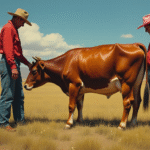Introduction
Despite significant advancements in recent years regarding the acquisition of financial products such as savings and credit through applications or financial institution websites, the daily use of digital payment methods remains limited, according to BBVA Mexico.
Digital Payment Usage
According to BBVA’s economic studies division, data from the National Financial Inclusion Survey (ENIF) 2024 indicates that digital channels for payments, such as electronic transfers or mobile apps, have the lowest usage frequency compared to cash and physical debit or credit card use.
- Only 4.4% of adults reported using digital methods more frequently for purchases under 500 pesos.
- For purchases over 500 pesos, digital method usage was only 7.6%.
Cash remained the most popular payment method at 85.2%, followed by physical credit card use at 10.4%.
The disparity between urban and rural areas is significant, with digital payment usage for purchases under 500 pesos being 3.7 percentage points lower in rural areas, and for purchases over 500 pesos, the difference reaches 5.6 percentage points.
Influence of the Shopping Ecosystem
BBVA’s analysis suggests that the shopping ecosystem plays a crucial role in this behavior, alongside financial product ownership.
“For instance, the use of digital channels like electronic transfers or mobile apps increases when making purchases via cell phone or online platforms such as Amazon, Mercado Libre, Shein, etc. (online platforms),” the report explains.
Of the 29% of adults making such purchases, 57.4% frequently use digital channels for payment.
The survey also revealed that adults perceive digital payment acceptance in shopping locations. Nationally, 45.5% of adults indicated that these payment methods are accepted almost everywhere, supporting the strategy to include micro, small, and medium-sized enterprises (MSEs) in financial inclusion.
The report emphasizes that low digital payment usage is closely linked to the transaction ecosystem.
Therefore, BBVA considers it essential not only to strengthen financial inclusion for individuals but also for businesses, ensuring they have the necessary capabilities to accept digital payments for their products and services.
Progress in Other Areas
On a positive note, the report highlights that digitalization has advanced in the financial sector. For example, 8.5% of savings product users and 12.2% of credit product users contracted their latest product through a mobile app or the institution’s website.
However, urban populations utilized digital channels more for savings (9.4%) and credit (13.4%) product acquisition compared to rural populations (6.3% and 8.4%, respectively).
Key Questions and Answers
- What does BBVA’s report highlight about digital payment usage? Despite progress in savings and credit acquisition through digital channels, the daily use of digital payment methods remains limited.
- What factors contribute to the low adoption of digital payments? The shopping ecosystem and financial product ownership play significant roles, with cash and physical card use remaining popular.
- How does the urban-rural divide affect digital payment usage? Digital payment usage is lower in rural areas compared to urban areas for both smaller and larger purchases.
- What progress has been made in financial digitalization? There has been advancement in digitalization, with 8.5% of savings product users and 12.2% of credit product users contracting their latest product through mobile apps or websites.
- How does the report suggest addressing low digital payment usage? Strengthening both individual and business financial inclusion, ensuring capabilities to accept digital payments, is crucial.






